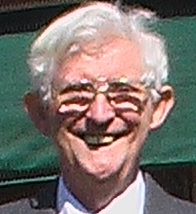


 

|
Essentials of Dynamics and VibrationLook out for the second edition! |
| By John Billingsley Published by Springer |
First edition simulationsAbout the first edition
|
Second edition simulationsAbout the second edition
In the first edition, the aim was to make
this incredibly difficult
subject as understandable as possible.
But on revising it, it became
clear that explanations could be improved.
The three-dimensional motion of a solid object
can be surprising, and more dynamic
simulations have been added to explain it.
These can be found on this website
but you will also find a way to copy them
to your own machine for offline use.
Folllow the instructions at the start of the book.
Those simulations will run as web pages in any browser. They range from robot arms and unbalanced spinning rotors, to vibrating systems with multiple modes and damping. They include physical experiments that you can try yourself, such as ‘Newton’s Cradle’, ‘Galilean Cannon’, gyroscopes and boomerangs. Thereis an example of the ‘Dancing T-handle in zero-g’, a video that can be found with an internet search. These all help the digestion of matrices, tensors, transformations, eigenvectors and functions of a complex variable. The topics are here given a light touch, to assist a deep understanding, while a plentiful supply of exercises and their solutions can help students test that understanding. Two final chapters apply an even lighter touch, to probe deep misconceptions about Black Holes, energy and the wild imagination of the film industry. Jules Verne suffers from close inspection. If the energy to heat your bath-water were instead used to lift it into the air, how high would it get? What is the maximum power that you could harvest by putting piezo transducers under paving slabs? |